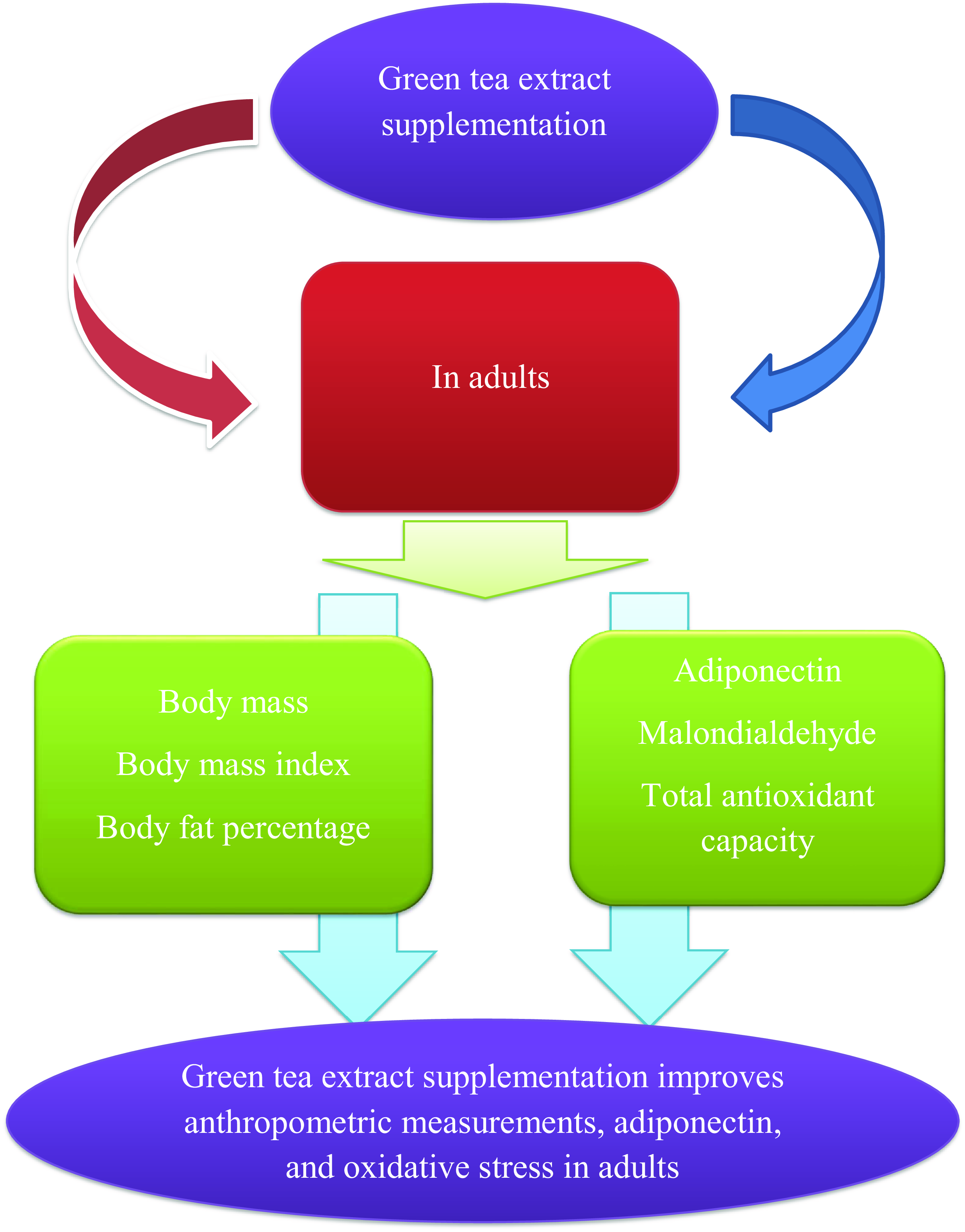No CrossRef data available.
Article contents
The effects of green tea extract supplementation on body composition, obesity-related hormones and oxidative stress markers: a grade-assessed systematic review and dose–response meta-analysis of randomised controlled trials
Published online by Cambridge University Press: 30 November 2023
Abstract

Research indicates that green tea extract (GTE) supplementation is beneficial for a range of conditions, including several forms of cancer, CVD and liver diseases; nevertheless, the existing evidence addressing its effects on body composition, oxidative stress and obesity-related hormones is inconclusive. This systematic review and meta-analysis aimed to investigate the effects of GTE supplementation on body composition (body mass (BM), body fat percentage (BFP), fat mass (FM), BMI, waist circumference (WC)), obesity-related hormones (leptin, adiponectin and ghrelin) and oxidative stress (malondialdehyde (MDA) and total antioxidant capacity (TAC)) markers. We searched proper databases, including PubMed/Medline, Scopus and Web of Science, up to July 2022 to recognise published randomised controlled trials (RCT) that investigated the effects of GTE supplementation on the markers mentioned above. A random effects model was used to carry out a meta-analysis. The heterogeneity among the studies was assessed using the I2 index. Among the initial 11 286 studies identified from an electronic database search, fifty-nine studies involving 3802 participants were eligible to be included in this meta-analysis. Pooled effect sizes indicated that BM, BFP, BMI and MDA significantly reduced following GTE supplementation. In addition, GTE supplementation increased adiponectin and TAC, with no effects on FM, leptin and ghrelin. Certainty of evidence across outcomes ranged from low to high. Our results suggest that GTE supplementation can attenuate oxidative stress, BM, BMI and BFP, which are thought to negatively affect human health. Moreover, GTE as a nutraceutical dietary supplement can increase TAC and adiponectin.
- Type
- Systematic Review and Meta-Analysis
- Information
- Copyright
- © The Author(s), 2023. Published by Cambridge University Press on behalf of The Nutrition Society





